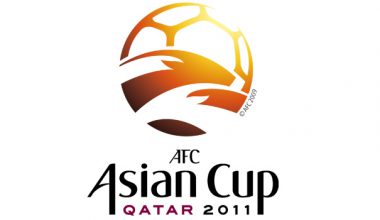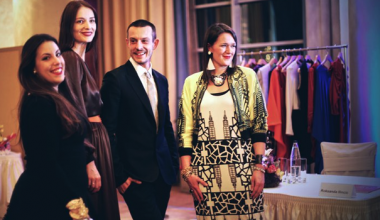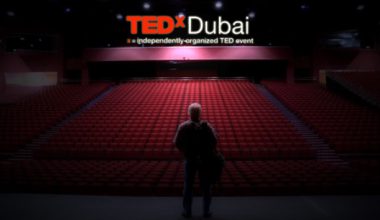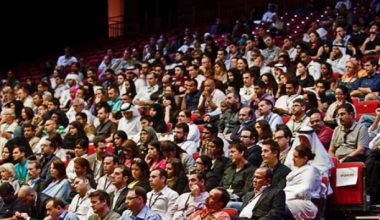When contemplating the significance of cultural narrative and national heritage, many things are conjured in the mind, but walking is seldom one. Yet archaeologists suggest that traditional knowledge appears first as embodied knowledge, developed through careful and patient movement through the spaces and territories of our planet. It is partly through the pedestrian experience, they say, that language is formed: what we see as we move demands to be identified and categorized. The walk from site to site leads to words and stories that do not reveal themselves if we’re sitting inside or defined – or confined – by stasis.
This is the premise of ‘Mapping Migration Memories’, a multi-year research project that revisits the biannual nomadic movements that took place historically between the deserts and the seacoasts in and around Qatar. This mass movement of people, in sync with the turning of the planet and the shifting of the seasons, is a significant but forgotten source of Qatar’s intangible cultural heritage. To preserve this heritage, the project suggests, is to preserve the memories of these migratory paths and the experience of traversing them.
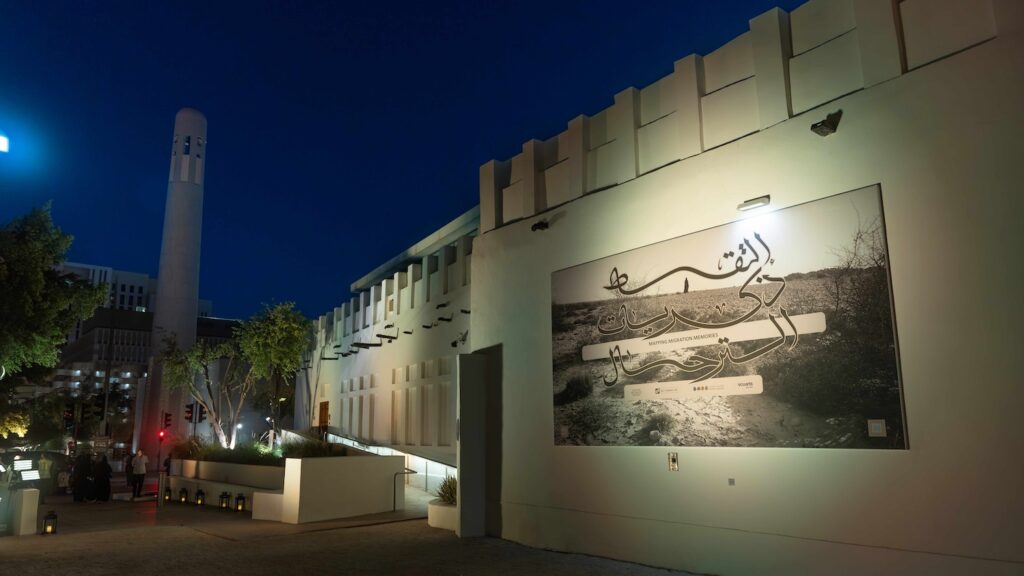
The project is led by (IN)>TANGIBLE LAB, part of the Institute for Creative Research at Virginia Commonwealth University School of the Arts in Qatar, a Qatar Foundation partner university. The first product that resulted from the project was an exhibition that was hosted at the Company House in Msheireb Downtown Doha from November 22, 2023, to January 27, 2024, which included two main features: a physical installation that traced and documented the migration paths of the North and South of Qatar, and a video that re-enacted that movement in the desert.
The installation captured the visual and acoustic character of the rugged terrains traversed during the biannual journeys, relying on existing, archived, and recorded memories, photos, films, and oral histories. The Lab’s Principal Investigator, Astrid Kensinger, Associate Professor and Chair of Graphic Design at VCUarts Qatar, said that the installation drew inspiration from two books discovered during research conducted at Qatar National Library’s Heritage Section: a text on the Danish Expedition from 1959, and a unique collection of female Bedouin poetry. It was also inspired by the oral history section at Qatar National Museum, which features footage of Qatari elders recounting memories of their experience in the biannual migration.
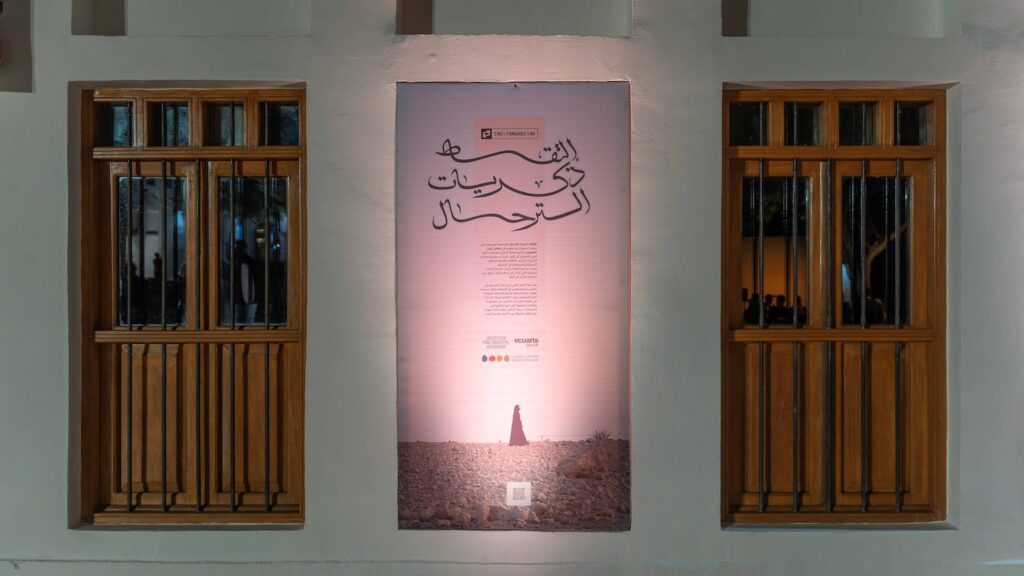
In addition to the physical installation, the exhibition also featured a reenactment of the migration journey performed by two members of the project’s core team, Graphic Design alumnae Maha Al Marri and Sara Al Naimi, who embarked on a journey to the desert with audio recorders on their feet to absorb the sound of the walk. The video shows Sara retracing her ancestors’ biannual migration routes in the north of Qatar, and Maha tracking her forefathers’ footsteps towards the south of Qatar and into what is currently Saudi Arabia. Both expeditions were performed in the seasonal times of the actual winter migrations.
For Al Marri, The opportunity “was not just about studying the past—it's more like a magical link between where we come from and where we're going.” She adds: “(IN)>TANGIBLE LAB is a sacred space to me, a special place where I feel the stories of our ancestors come alive. The Lab isn't just about learning; it's a personal adventure, a rediscovery of identity, and a commitment to ensuring our heritage thrives in the hearts and minds of generations to come.”
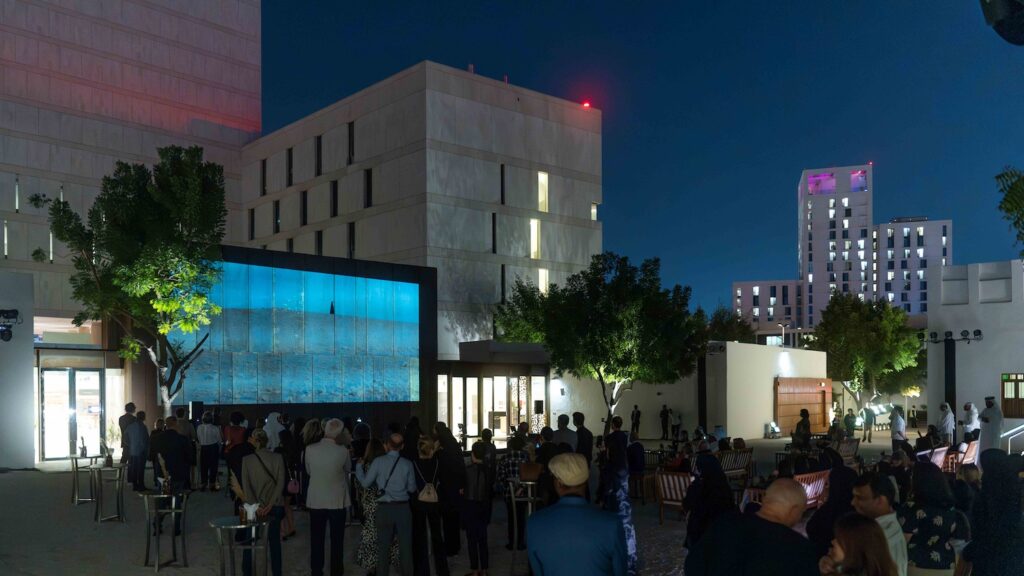
The ‘Mapping Migration Memories’ project will continue to gather existing documentation and seek out unrecorded memories of the bi-annual Qatari migration for its future initiatives and programs. Like the exhibition, the focus of this research will be the walk itself, celebrating memories of indigenous wisdom that are deeply attached to the experience of navigating the desert. Historically, the indigenous communities of Qatar have devised distinctive methods for encoding useful data and philosophies of thought into modes of activity that are linked to particular landscapes. Beyond this context, the focus on walking is also an opportunity to reflect on a repetitive activity that is taken for granted on a daily basis, and to appreciate how it contributes to illuminating words and ecological knowledge that define the identity of a community and differentiate one language from the next.
By learning from the past through participatory engagement, and celebrating the sheer grit and perseverance of a population’s ancestors, the ‘Mapping Migration Memories’ project contributes to the larger mission of (IN)>TANGIBLE LAB. As the world becomes increasingly homogenized, Intangible cultural heritage elements are vulnerable to being lost or forgotten. (IN)>TANGIBLE LAB seeks to preserve living culture, with an emphasis on the traditional ecological knowledge of Qatar, and extend it into the future. This research and design cluster brings together designers, artists, cultural scholars, scientists, and museum curators from partner universities in the spirit of multiversity upon which Education City was established.


